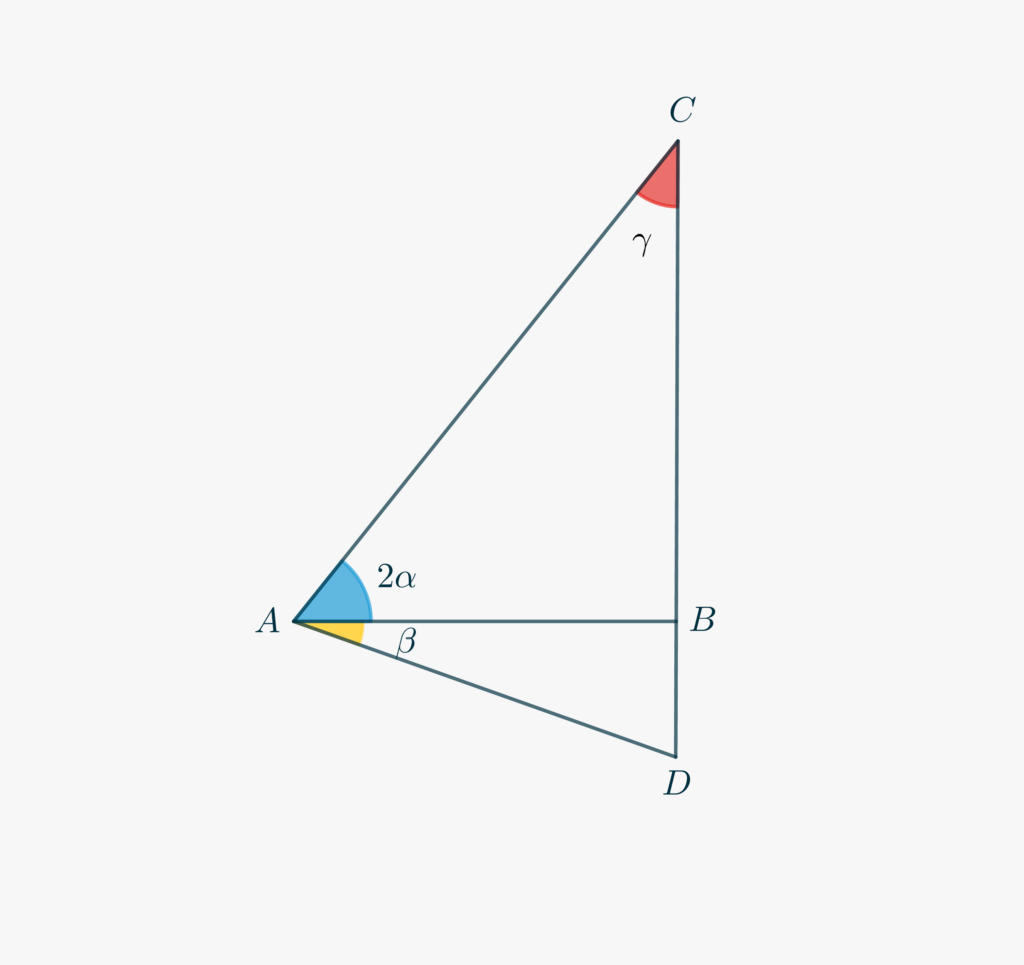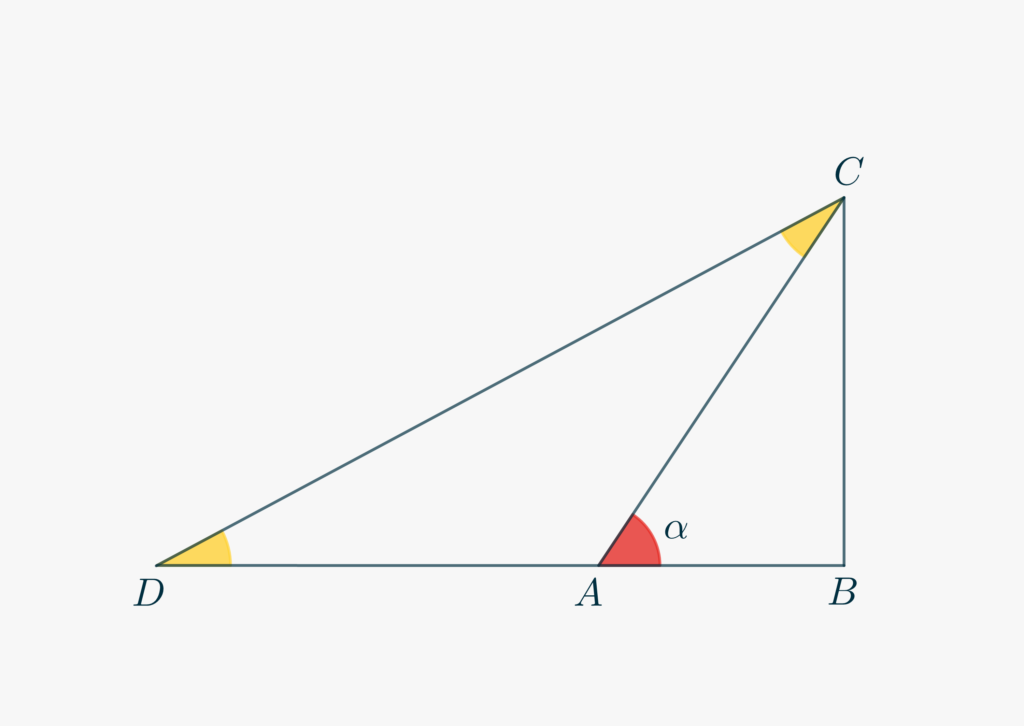Let us consider some “mysterious looking” identities that involve the inverse tangent function.
\begin{equation}\frac{1}{2}\cdot \arctan x + \arctan\left(\sqrt{1+x^2}-x\right)= \frac{\pi}{4}, \ \ \forall x \in \Bbb R,\tag{1}\label{eq613:1}\end{equation}
\begin{equation}\arctan x = 2\arctan\left(\frac{x}{1+\sqrt{1+x^2}}\right)
, \ \ \forall x \in \Bbb R ,\tag{2}\label{eq613:2}\end{equation}
\begin{equation}\arctan x + \arctan\left(\frac{x+1}{x-1}\right)=\frac{3\pi}{4}, \ \ \mbox{for} \ \ x >1,\tag{3}\label{eq613:3}\end{equation}
They can all be easily demonstrated by differentiating both sides of each identity, in order to show that the quantities at LHS and RHS must differ by at most a constant factor. Then plugging in any number shows that this constant is in fact \(0\).
A demonstration solely based on trigonometric concepts, however, appears to be way more essential, and allows to unveil the actual geometrical meaning of this kind of relationships. After all, provided that we refer to angles in the first quadrant, the \(\arctan(\cdot)\) function simply represents the acute angle of a right-angled triangle, given the ratio between its sides’ lengths. The rest can be obtained by symmetries. Let us see, e.g., how to demonstrate \eqref{eq613:1}.
Suppose for now it is \(x \geq 0\) and consider the following Figure.

Triangle \(\triangle ABC\) is right-angled and such that \(\overline{AB} = 1\), \(\overline{BC} = x\). By definition,
\begin{equation}\angle BAC = 2\alpha = \arctan x,\tag{4}\label{eq613:a}\end{equation}
and, by Pythagorean Theorem, \(\overline{AC} = \sqrt{1+x^2}\). Extend now \(BC\) to a segment \(BD\) such that \(\overline{CD} = \overline{AC}\). Then,
\(\overline{BD} = \sqrt{1+x^2}-x\), and, by definition
\begin{equation}\angle BAD = \beta = \arctan\left(\sqrt{1+x^2} -x\right).\tag{5}\label{eq613:b}\end{equation}
Since \(\triangle ABC\) is right-angled we have
\begin{equation}\angle ACB = \gamma = \frac{\pi}{2}-2\alpha.\tag{6}\label{eq613:c1}\end{equation}
Triangle \(\triangle ACD\) is isosceles. So
\begin{equation}\gamma = \pi – 2\cdot(2\alpha +\beta).\tag{7}\label{eq613:c2}\end{equation}
Equating \eqref{eq613:c1} e \eqref{eq613:c2} yields
\[\alpha +\beta = \frac{\pi}{4},\]
that is, using definitions \eqref{eq613:a} and \eqref{eq613:b}
\[\frac{1}{2}\cdot \arctan x + \arctan\left(\sqrt{1+x^2}-x\right) = \frac{\pi}{4}. \]
We still have to demonstrate the case \(x<0\). We need thus a right-angled triangle with sides \(\overline{AB} = 1\) and \(\overline{BC} = -x\).
- Draw the required triangle and correctly define \(\alpha\) so that \[2\alpha = \arctan(-x) = -\arctan x,\] by using the symmetries of the tangent function.
- Extend \(BC\) to a segment \(CD\) in order to have \(\overline{CD} = \overline{AC}=\sqrt{1+x^2}\).
- Define \(\beta\) so that \[\beta = \arctan\left(\sqrt{1+x^2}-x\right)\] (recall that \(x<0\).)
- Use the fact that \(\triangle ABC\) is right-angled to define \(\gamma = \angle ADC\) in terms of \(\alpha\) and \(\beta\).
- Consider the isosceles triangle \(\triangle ACD\) for writing another relationship that connects \(\gamma\) to \(\alpha\) and \(\beta\).
- Use the identities found in 4. and 5. to write a relationship between \(\alpha\) and \(\beta\) which will give you again \eqref{eq613:1}.
In order to demonstrate \eqref{eq613:2} you can start from the right-angled triangle depicted below, where again \(\overline{AB}=1\) and \(\overline{BC} = x\), and side \(AB\) has been extended to a segment \(\overline{AD} = \overline{AC}\). Can you demonstrate the identity? (Hint: use the Exterior Angle Theorem to express \(\angle BDC\) in terms of \(\alpha\).)

In a next post we will show you how to demonstrate \eqref{eq613:3} and an interesting generalization.
